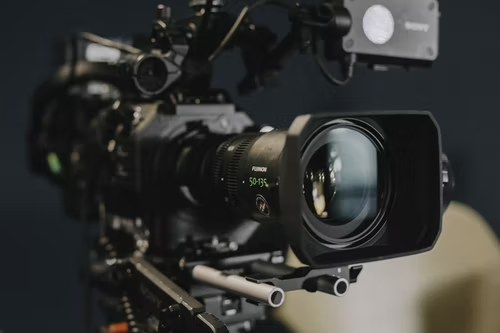A blog on World Photography Day
A garland of sweet memories for all on the occasion of World Photography Day on 19th August every year.
If we hear a word we will forget it for some years, if we read a word it will be forgotten for some more years but if we see a photo it will be imprinted in our mind for a long time. Behind every photo, there is a memory, a story, and a feeling. There is a worldwide important day for this photography that leaves such a mark. For this, World Photography Day is celebrated on August 19. The invention of the 'Daguerre type', a photographic process, is the origin of this day of photography. This process was developed by Louis Daguerre.
Recording photos and videos on "radio-sensitive" material (photo paper, flash drive, hard disk) are called photography. It is a healthy habit. Photography is used for entertainment, business, science experiments, art, and manufacturing (photolithography). On January 9, 1839, the French Academy of Sciences announced the Daguerre type. "Sir John Herschel" of the Royal Society introduced photography to the world on 14-March-1839. Another photography process, 'Kellotype', was discovered in 1839 by William Fox Talbot and announced in 1841. The name photography comes from the Greek language -- Greek (photos) "light" and (graphé) "representation using lines" or "drawing", together meaning "drawing with light".
World Photography Day is celebrated every year to celebrate photography and to show how photography is unique. Nowadays there is scientific knowledge that can take any number of photos in seconds and see them immediately.
Photography is widely used as a witness to history, science, entertainment, and many other fields. Photography has a great impact on people's lives. A camera is used to take photos. Now there are so many advanced cameras. Some have taken photos from many years ago. Photos are the things that remember past memories. Videos belong to this same category. At first, only black & white photos could be taken. Over time, color photography became very popular. Every cell phone has a camera which means how much photography has evolved. This is also called digital photography.
A photograph that solidifies our sweet memories,
A photograph is an inseparable bond in our lives.
A photograph that shows close people who are far away from us,
A portrait of our looks, a standing testimony of our gestures, is a photograph.
A photograph is an inseparable bond in our lives.
A photograph that shows close people who are far away from us,
A portrait of our looks, a standing testimony of our gestures, is a photograph.
Chinese philosopher 'Motrai', Greek mathematicians Aristotle and Euclid explained about pinhole camera in 4-5 centuries BC. In the sixth century, the Byzantine scientist Anthemius used the Obscura camera for his experiments. Later, a scientist named Ibn al-Haytham studied camera obscura and pinhole cameras. Albertus Magnus (1193/1206 - 1280) discovered silver nitrate, while Georges Fabricius (1516-1571) discovered silver chloride. In 1568 another scientist 'Daniel Bar Burrough' described the diaphragm. Will Helm Hamburg, a famous person, explained how light causes some chemicals (photochemical effect). Another French expert between 1729-1774 explained photography. Like this, behind the photography that clicks on the eyelid today, there are efforts and studies of many scientists.
Between October and November 1839, a photograph of about a quarter plate was taken with the help of the Daguerre type. This is the first light picture. In 1826, a French inventor made efforts to take the first permanent photograph. He experimented with taking photos with various processes. George Eastman laid the foundation for today's chemical film camera technology. Janez Puhar discovered the process of taking photographs on glass in 1841, and it was given commercial recognition by the Academic National Agricole Manufacturers in Paris in 1852. In 1847 Nipsey published the process he discovered for the manufacture of St. Victor glass plates. John Whipple also worked to improve the glass negative process in Boston. Frederick Scott Archer discovered the collodion process in 1851, and photographer and children's author Lewis Carroll used the process. Later researchers investigated the development of photographs through various chemical processes. By the 19th century, many types of cameras and photography methods became available.
As the decades passed, various camera designs became available. The photographic process has grown tremendously in twenty (20) years with many improvements and series. With the introduction of the Kodak Brownie in the market in 1901, the knowledge that anyone could take photographs became available. The first digital scanning photograph began in 1957. The digital scanning process was discovered by a computer scientist named Ruskel A. Kirsch at the National Institute of Standards and Technology. He improved the method that could be fed into a computer. His son developed the 'Walden Kirsch' image for the first time. Although the first color image was photographed in 1861, color photography continued to develop throughout the 19th century.
There are many studies and researches behind today's modern photography knowledge where photos can be taken in moments. Step by step, each step has progressed over 100 years and today's modern technology has been developed. This world photography festival is to remember the efforts of many scientists since then till today.
Some of the photos taken by me:















Comments
Post a Comment